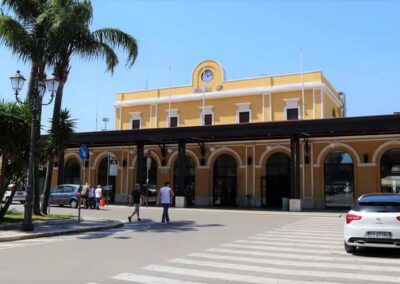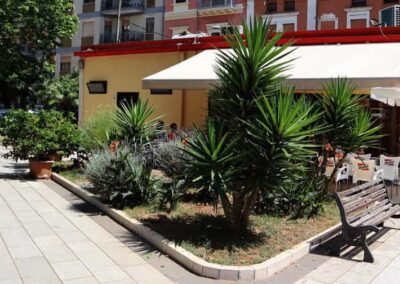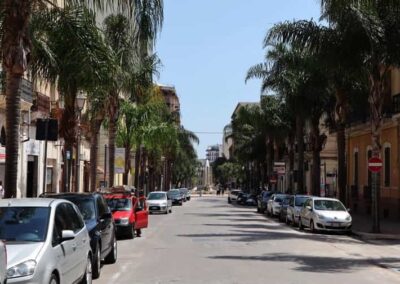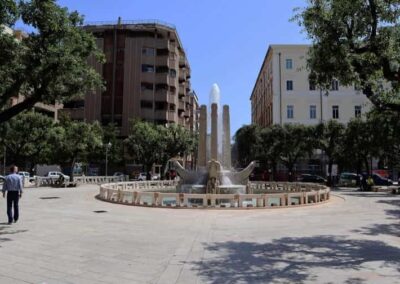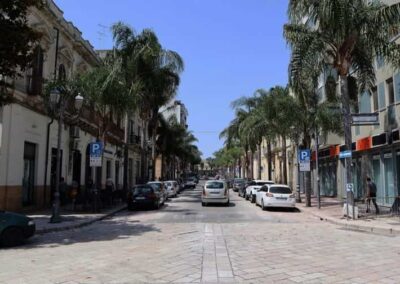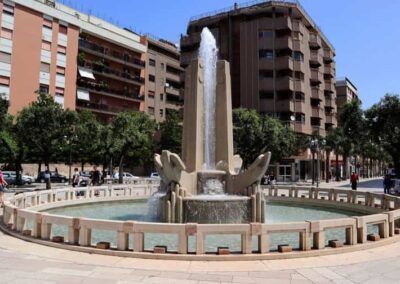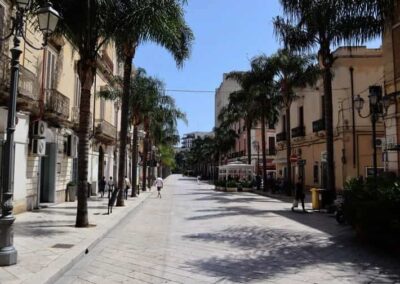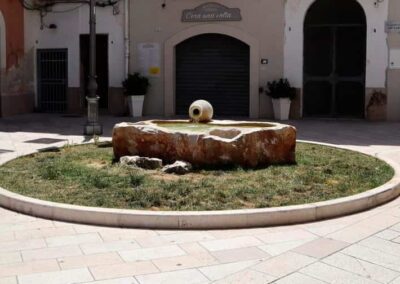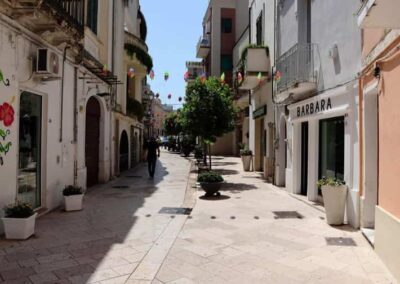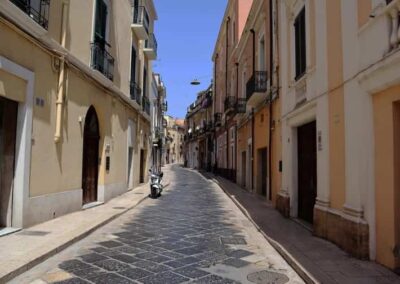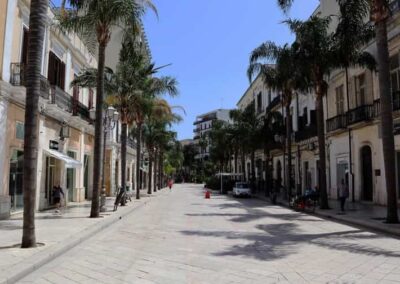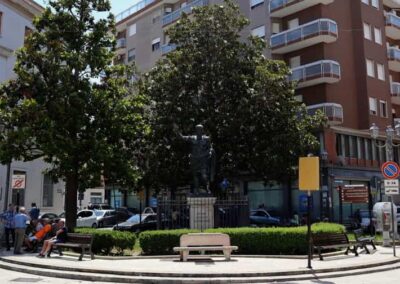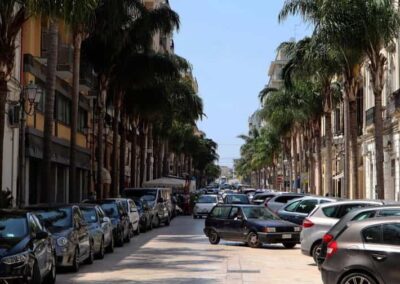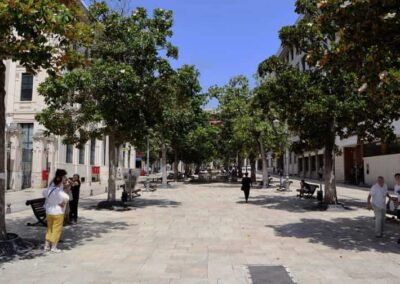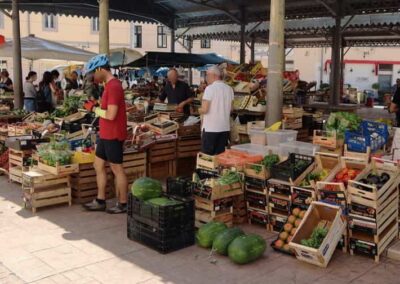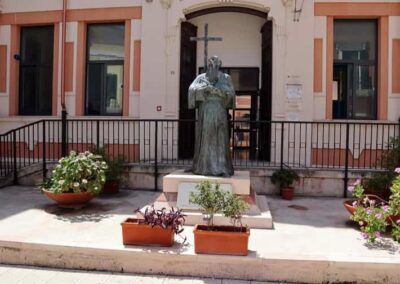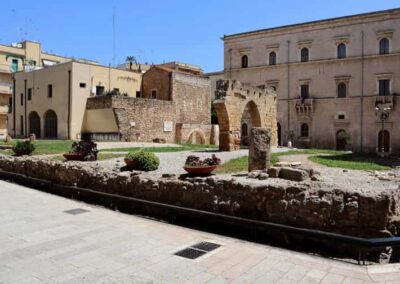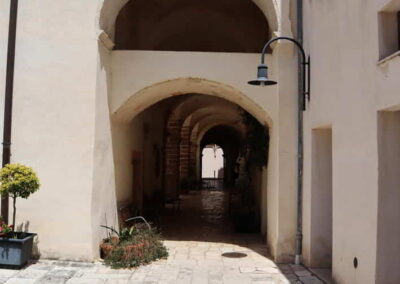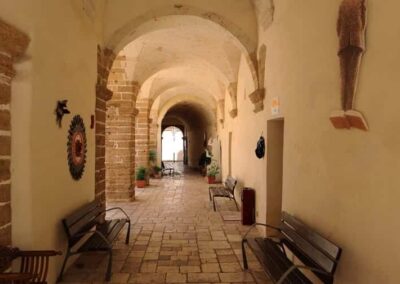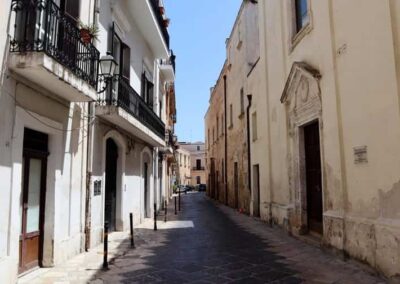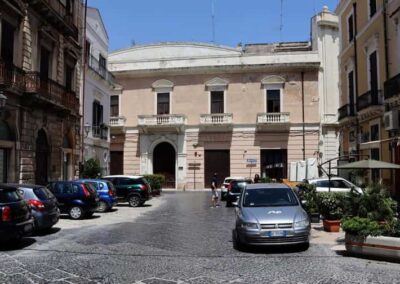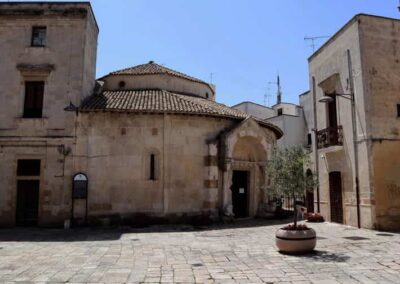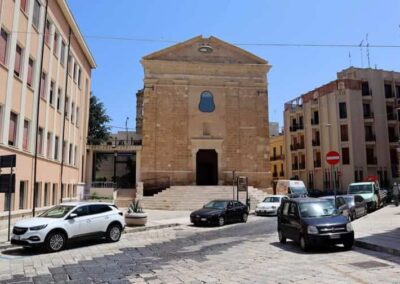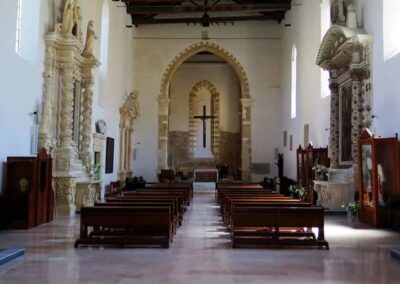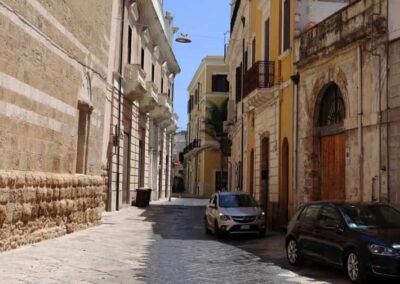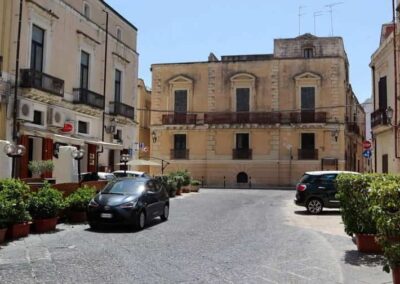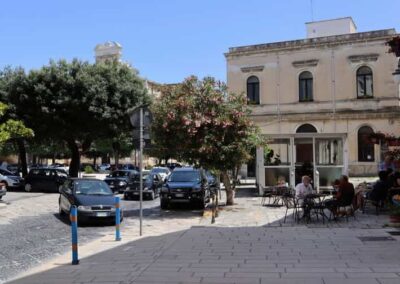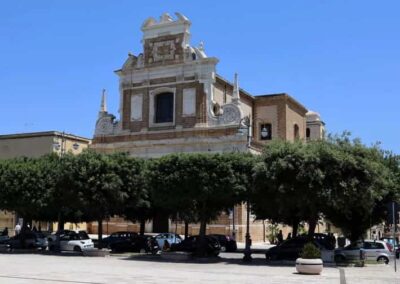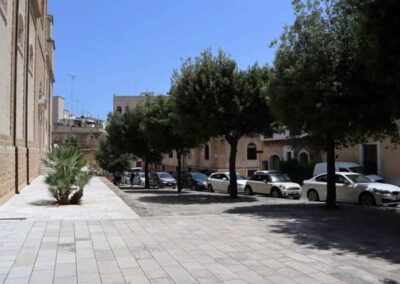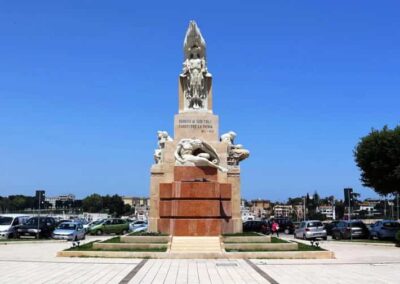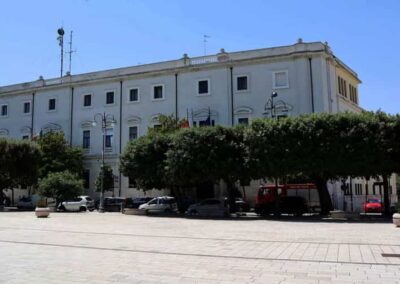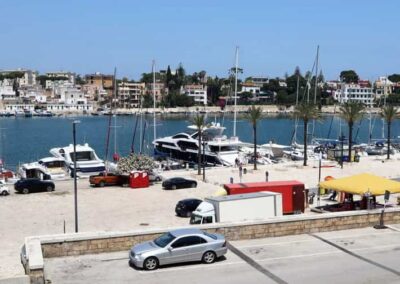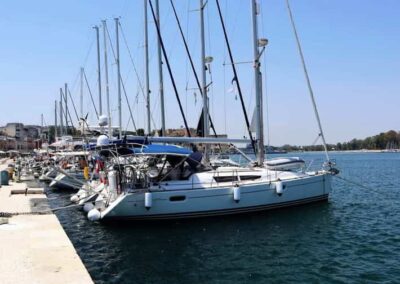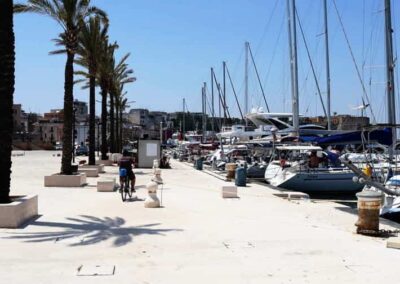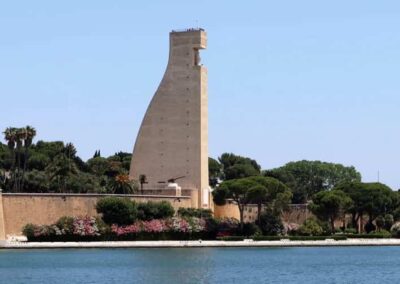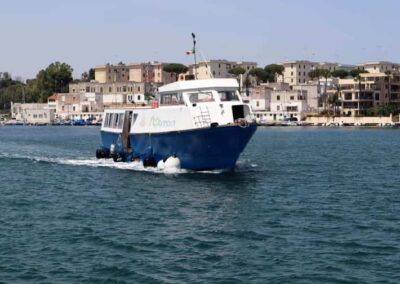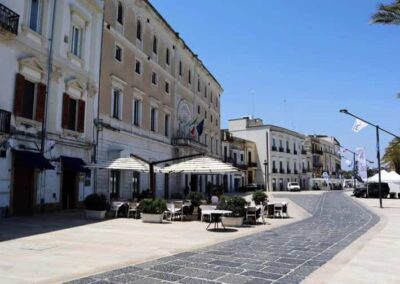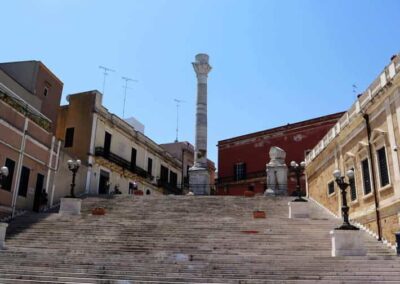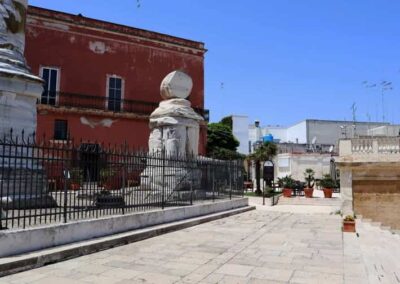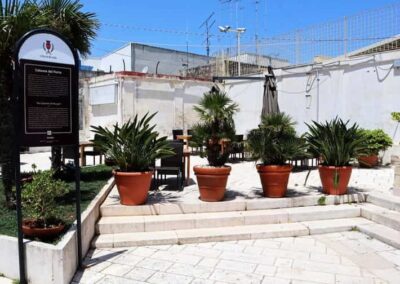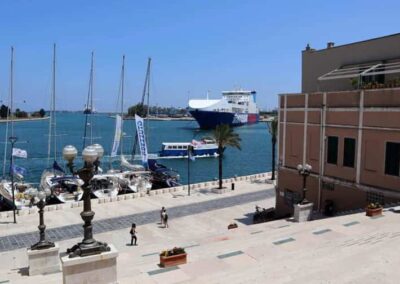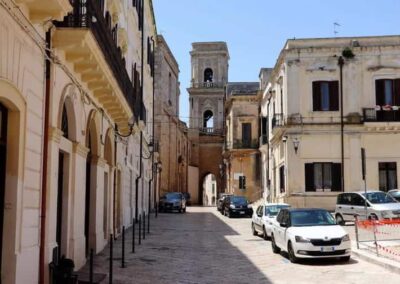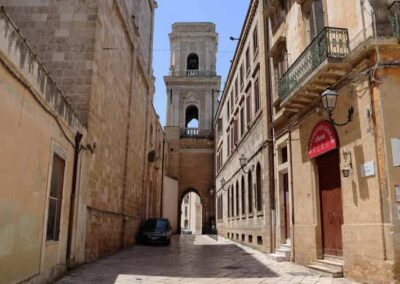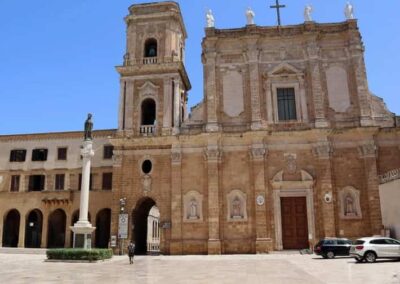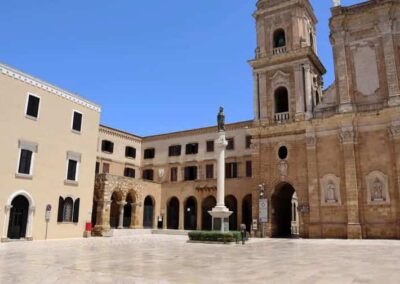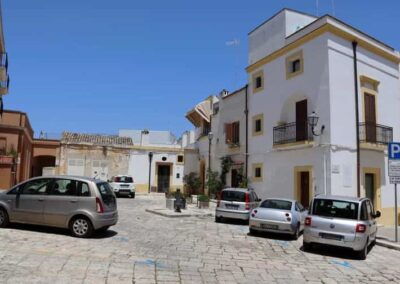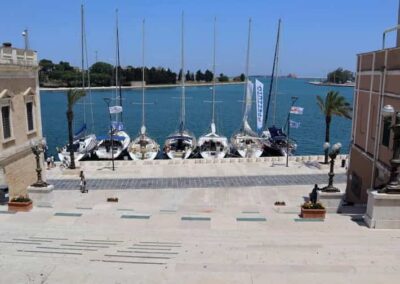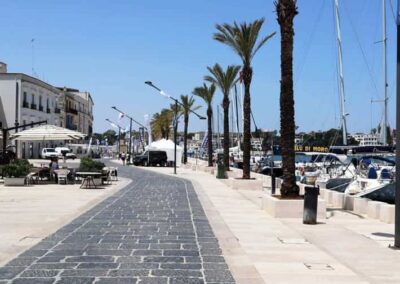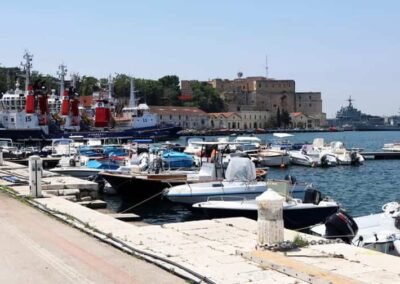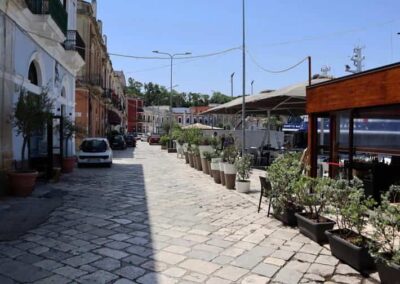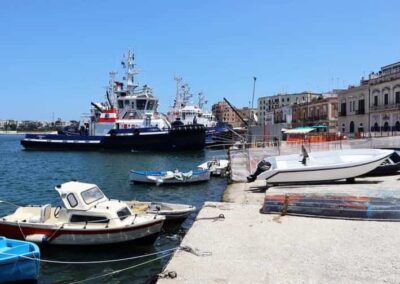HOME
THE REGIONS OF ITALY
PLACES IN ITALY
Italy in Photos
Via Thaon De Revel Paolo, 72100 Brindisi, Italy (2019)
Brindisi
Pescara, a lively and dynamic city located on Italy’s Adriatic coast, is a place where natural beauty, history, and modernity converge. As the largest city in the Abruzzo region, Pescara serves as a vital economic, cultural, and transportation hub. Known for its stunning beaches, rich historical background, and vibrant urban life, Pescara attracts visitors from across Italy and beyond, offering a unique blend of experiences that cater to a variety of interests. Pescara’s strategic location along the Adriatic Sea has been central to its development over the centuries. The city is divided by the Pescara River, which flows from the Apennine Mountains and empties into the Adriatic. This natural feature has played a significant role in the city’s history, serving as a natural boundary and a resource that facilitated trade and transportation. The history of Pescara dates to ancient times when it was known as Aternum, a significant port during the Roman era. Aternum was a key trading centre, linking Rome to the eastern Mediterranean via the Adriatic. The remains of the ancient Roman settlement, including parts of a bridge and roads, can still be seen in the area, serving as a testament to Pescara’s long and storied past. Throughout the Middle Ages, Pescara was contested by various powers due to its strategic location. It was part of the Kingdom of Sicily and later the Kingdom of Naples, and during these periods, the city experienced both growth and conflict. The modern city of Pescara, however, only began to take shape in the 19th century, following the unification of Italy, when it became an important military and industrial centre.
Today, Pescara is a bustling urban centre with a population of over 120,000 residents. The city is characterized by its modern architecture, wide boulevards, and a vibrant cultural scene. Pescara’s economy is diverse, with strong sectors in tourism, commerce, industry, and services. The city’s port remains a key asset, serving as a gateway for trade and travel to and from the Adriatic and beyond. One of Pescara’s most significant modern developments is its role as a transportation hub. The city is home to the Pescara Centrale train station, which connects it to major cities such as Rome, Milan, and Bologna. Additionally, Pescara has an international airport, Abruzzo Airport, which provides access to various European destinations. This connectivity has made Pescara a convenient destination for both business and leisure travellers. Pescara has a rich cultural life, with numerous museums, galleries, and theatres that celebrate its artistic heritage. One of the city’s most famous sons is the poet Gabriele D’Annunzio, a prominent literary figure in Italy. The house where he was born, Casa Natale di Gabriele D’Annunzio, has been preserved as a museum, offering insights into his life and works.
The city also hosts various cultural events throughout the year, including the Pescara Jazz Festival, one of the oldest and most prestigious jazz festivals in Italy. This event attracts renowned musicians from around the world and adds to Pescara’s reputation as a vibrant cultural centre. Pescara is renowned for its beautiful coastline, which stretches for several kilometres along the Adriatic Sea. The city’s beaches are some of the best in Italy, featuring soft golden sands and clear blue waters. These beaches are a major draw for tourists, particularly during the summer months when the city comes alive with beachgoers, festivals, and nightlife. The Lungomare, Pescara’s seafront promenade, is a popular spot for walking, cycling, and enjoying the sea breeze. Lined with palm trees, cafes, and restaurants, the Lungomare offers stunning views of the Adriatic and is a central part of the city’s social life. Beyond the beaches, Pescara is surrounded by natural beauty. The nearby Apennine Mountains offer opportunities for hiking, skiing, and exploring Italy’s rugged interior. The region is also home to several national parks, including the Majella National Park, known for its diverse flora and fauna.
Pescara is a city of contrasts, where the old meets the new, and the natural world blends seamlessly with urban life. Its historical roots as an ancient port and its modern status as a thriving city create a unique atmosphere that is both welcoming and dynamic. Whether you’re interested in history, culture, or simply relaxing by the sea, Pescara offers something for everyone. Pescara is not just a gateway to the Adriatic, but a destination in its own right. With its rich history, vibrant culture, and stunning natural surroundings, Pescara invites visitors to explore its many facets and discover the unique charm of this coastal city. Whether strolling through its modern streets, enjoying its beaches, or delving into its past, Pescara offers a diverse and enriching experience that captures the essence of Italy’s Adriatic coast.
Worth a Visit
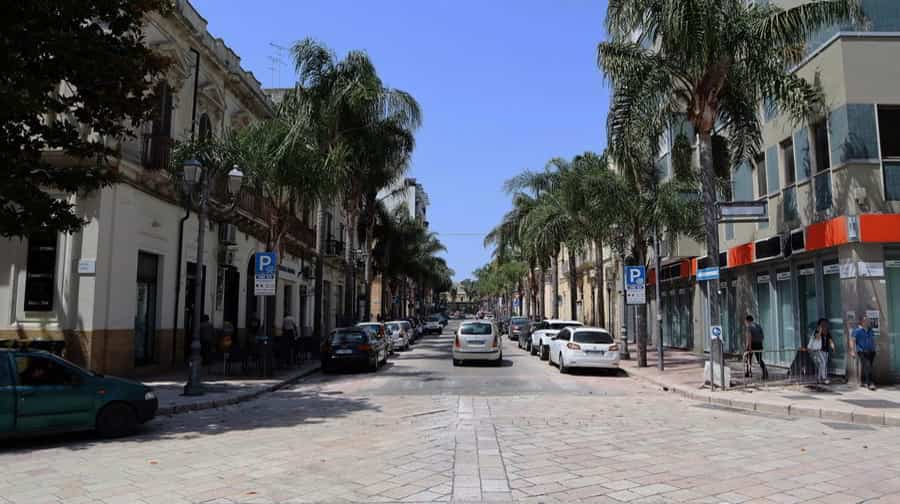
Corso Umberto I is one of the main thoroughfares in the city of Brindisi, a vibrant coastal town in southern Italy, steeped in ancient history and Mediterranean charm. Stretching from the central train station toward the heart of the city, Corso Umberto I serves not only as a vital urban artery but also as a gateway for visitors arriving to explore Brindisi’s cultural, historical, and commercial offerings. With its elegant facades, wide sidewalks, and lively atmosphere, the street captures both the energy of modern Brindisi and echoes of its illustrious past. Originally laid out during the late 19th and early 20th centuries, the Corso was named in honour of King Umberto I of Italy, a monarch who reigned during a time of national consolidation and modernization.
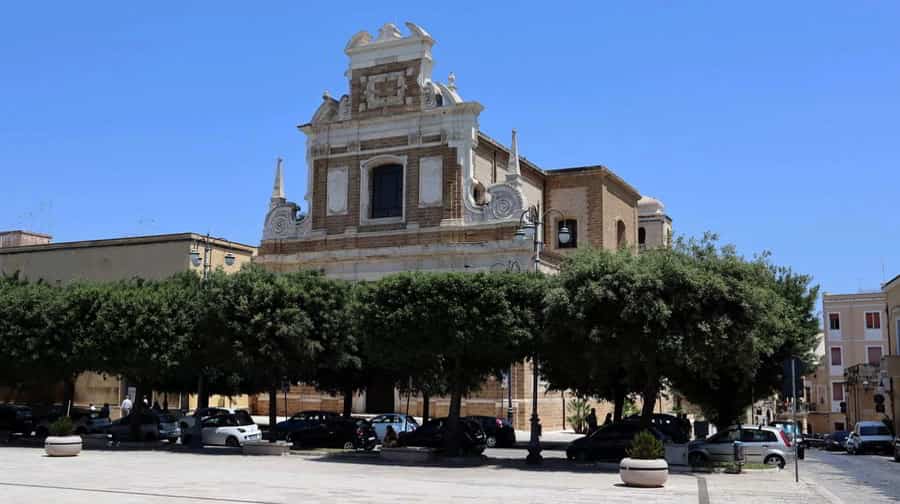
Piazza Santa Teresa is one of Brindisi’s most evocative and historically rich squares, situated in the heart of this ancient port city on Italy’s Adriatic coast. Though modest in size compared to grander Italian piazzas, its quiet elegance and layered past give it a distinct charm that draws both locals and visitors alike. Surrounded by architectural remnants that span centuries, the square is a living testimony to Brindisi’s complex history, a crossroads of Mediterranean cultures, commerce, and faith. The piazza takes its name from the adjacent Church and Monastery of Santa Teresa, an 18th-century Baroque complex built by the Discalced Carmelites. The church’s elegant façade, with its balanced proportions and decorative details, stands as a focal point of the square.
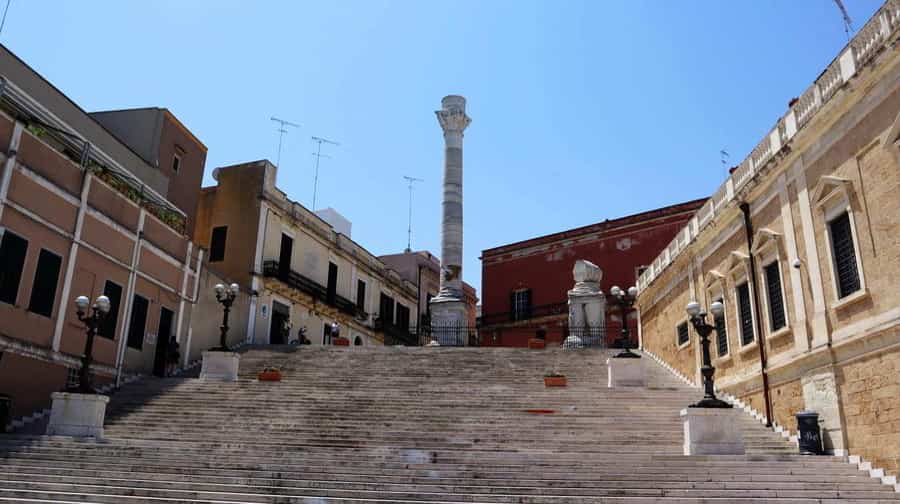
The Colonne Romane (Roman Columns) in Brindisi stand as iconic symbols of the city’s ancient past and its crucial role in the Roman Empire. Positioned dramatically at the top of a broad staircase overlooking the inner harbour, these towering marble columns once marked the end of the Via Appia, the legendary Roman road that connected Rome to the south-eastern tip of Italy. For centuries, travellers, merchants, soldiers, and pilgrims arriving by sea would see the columns as a sign that they had reached the gateway to Rome, or, for those departing, the last glimpse of imperial civilization. Originally a pair, only one of the two columns remains fully standing today. The second collapsed in the 16th century and part of it, specifically the capital, was later gifted to the city of Lecce, where it now adorns Piazza Sant’Oronzo.
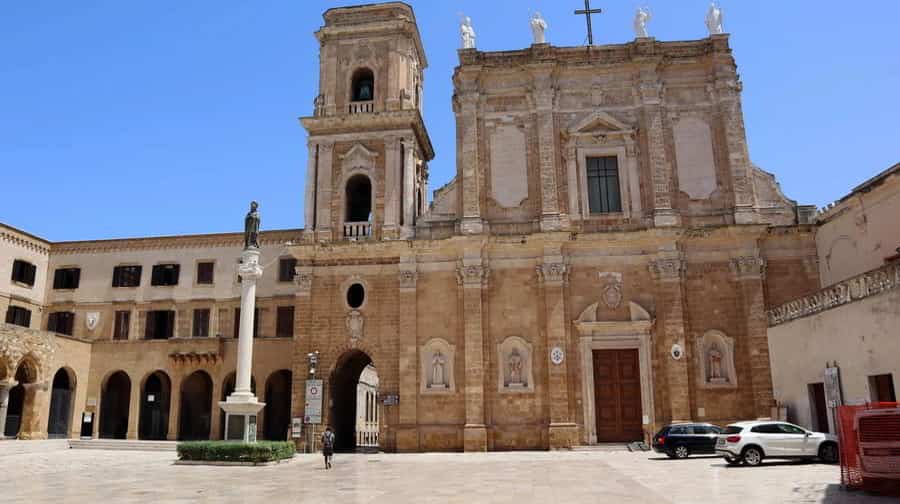
Piazza Duomo in Brindisi is one of the city’s most historically and architecturally significant spaces, a serene, elegant square that reflects centuries of religious, civic, and cultural development. Located within the ancient heart of Brindisi, this piazza has long served as a focal point of spiritual and administrative life, anchoring the community both symbolically and physically. Unlike the more commercial or bustling squares found elsewhere in the city, Piazza Duomo possesses a quiet dignity, its open expanse framed by some of Brindisi’s most important monuments. At the centre of the square stands the Cathedral of Brindisi, or Duomo di San Giovanni Battista, originally constructed in the 11th century and later rebuilt following the earthquake of 1743.
Photo Gallery of Walk 1 – Stazione, Corso Umberto I to Chiesa di San Paolo Eremita
Approximately 1.80 km – 1.12 miles
The walk sarts at Brindisi Stazione, Corso Umberto I – Corso Umberto I – Piazza Cairoli – Via Camillo Benso Conte di Cavour – Corso Umberto I – Piazzetta Fornaro – Via Conserva – Via S. Lorenzo da Brindisi – Corso Umberto I – Piazza del Popolo – Corso Roma – Piazza Vittoria – Via Ferrante Fornari – Piazza Mercato – Via Ferrante Fornari – Via Santi – Via dei del Balzo – Largo de’ Calò – Via Marco Pacuvio – Tempio di San Giovanni al Sepolcro, Via S. Giovanni al Sepolcro – Via Marco Pacuvio – Via Giovanni Tarantini – Piazza Dante – Vico De’ Vavotici – Chiesa di San Paolo Eremita, Via Annibale de Leo
Photo Gallery of Walk 2 – Vico De’ Vavotici to Via Thaon De Revel Paolo
Approximately 0.00 km – 0.00 miles
The walk starts in Vico De’ Vavotici – Piazza Dante – Via Annibale de Leo – Piazza Santa Teresa – Monumento ai Caduti d’Italia, Piazza Santa Teresa – Via Annibale de Leo – Piazza Santa Teresa – Via Pasquale Camassa – Via Lenio Flacco – Piazzale Lenio Flacco – Viale Regina Margherita – Via Colonne – Colonne Romane, Via Colonne – Piazza Duomo – Via Colonne – Viale Regina Margherita – Via Lenio Flacco – Via Thaon De Revel Paolo
COPYRIGHT © 2018-2025 ITALY IN PHOTOS - ALL RIGHTS RESERVED
